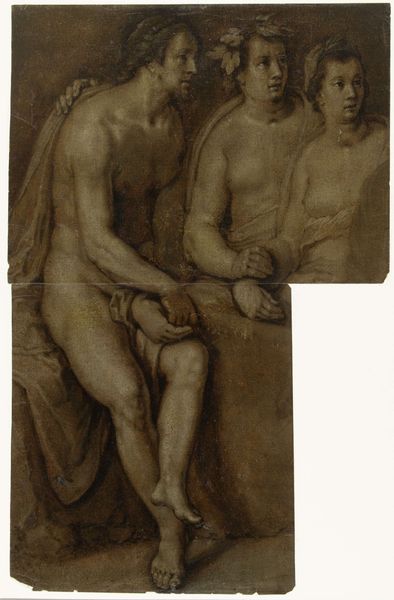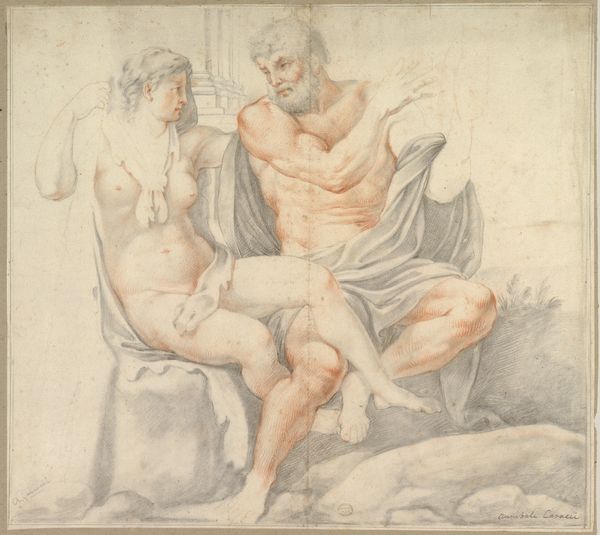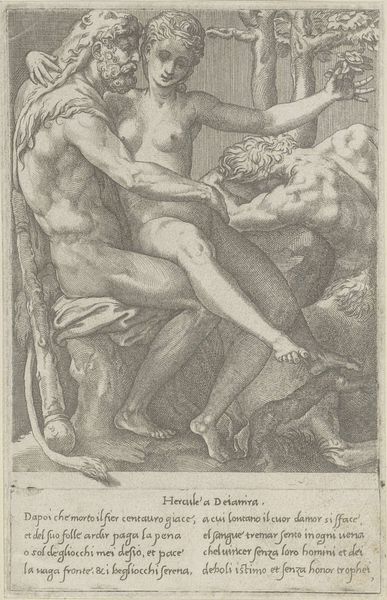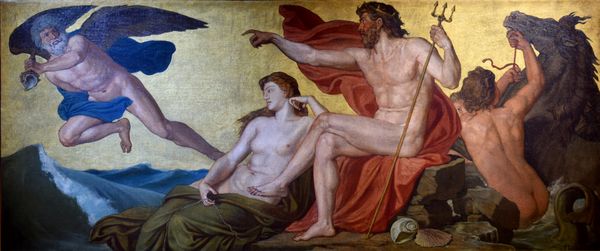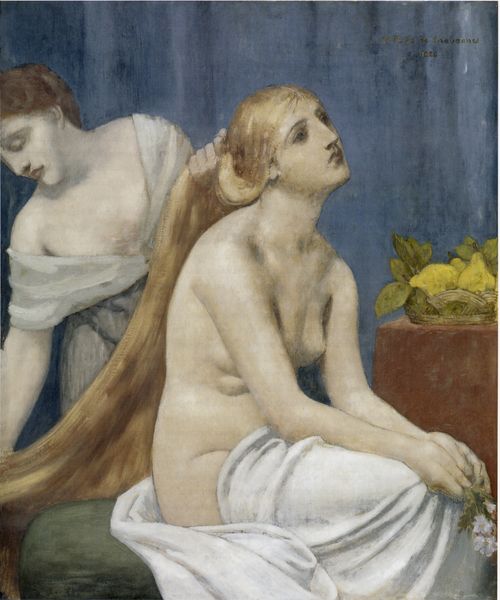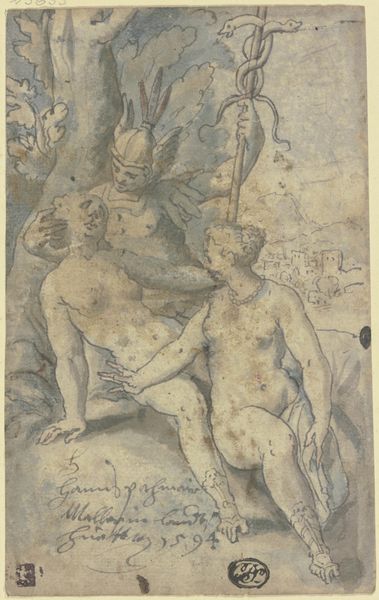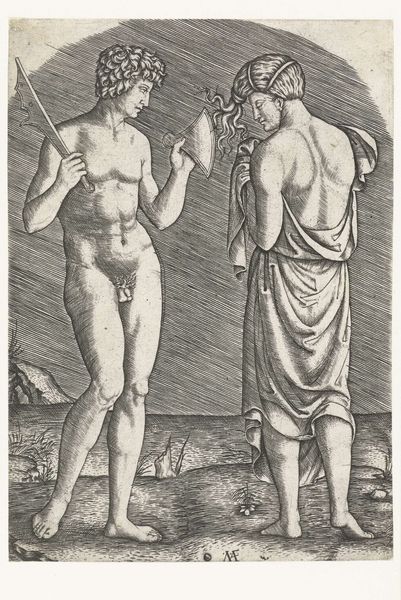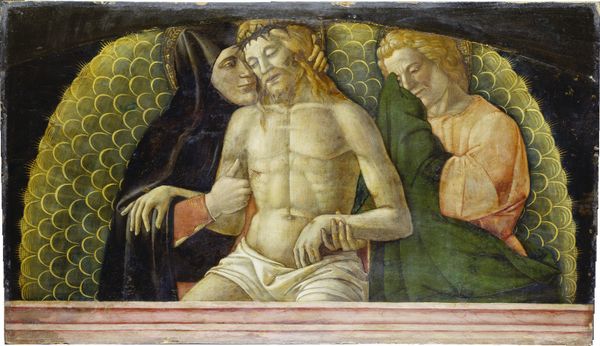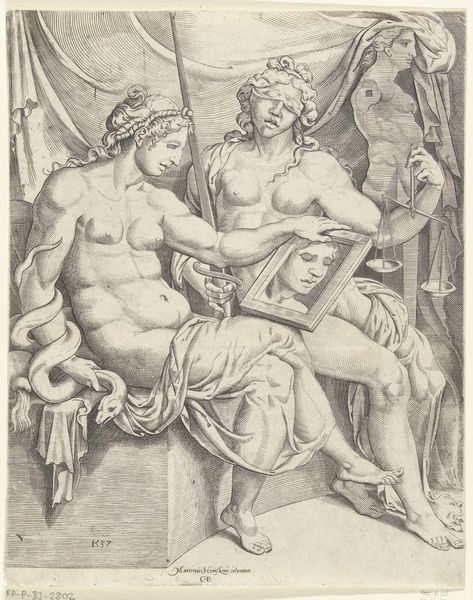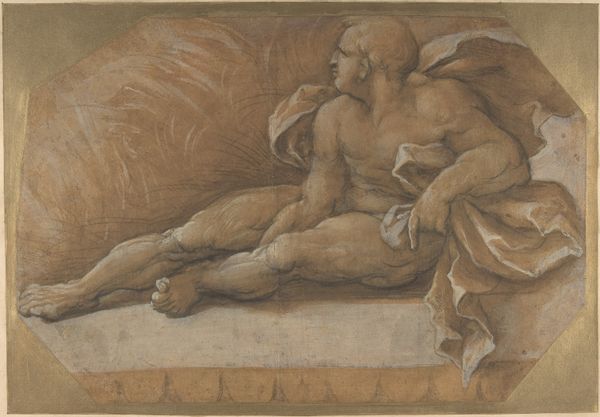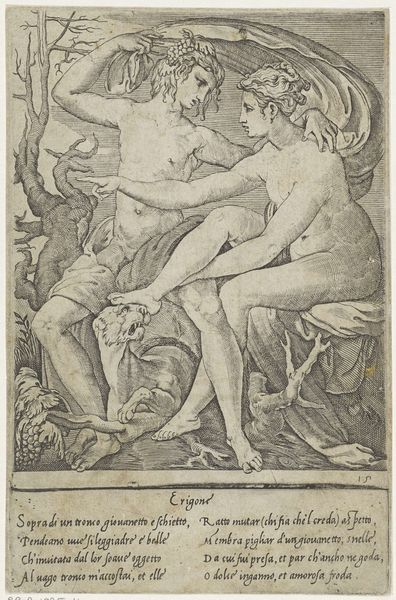
painting, fresco
#
narrative-art
#
painting
#
figuration
#
fresco
#
oil painting
#
christianity
#
mythology
#
human
#
history-painting
#
italian-renaissance
#
nude
#
early-renaissance
#
portrait art
Copyright: Public domain
Curator: This fresco, located in the Brancacci Chapel here in Florence, is Masaccio’s "Adam and Eve Banished from Paradise," created around 1427. It represents a pivotal moment in Christian theology. Editor: Man, what a bummer, right? Look at their faces, totally wrecked. They’re like, "Wait, we messed up *that* badly?" and now they're being kicked out. And she’s doing that classic covering-up thing, so universal. Curator: Indeed. It’s a raw depiction of shame and expulsion, reflecting a break from the idealized figures of the past. The narrative obviously tackles the complex themes of disobedience, punishment, and the dawn of human consciousness. The angel, powerful and resolute, contrasts starkly with Adam and Eve's vulnerability. Consider the historical backdrop; what was Masaccio aiming to convey to his early Renaissance audience? Editor: To me it feels less about religious dogma, though I see the intent. It feels super human. Stripped bare, both literally and figuratively. You get the sense of immense loss, something basic being taken away. It’s that gut-wrenching feeling we’ve all had when a door slams shut on something. Plus, that harsh lighting? So unforgiving. Curator: Precisely. The fresco employs innovative naturalism, contrasting the divine realm with the starkly realistic depiction of human figures. It mirrors humanism, this rediscovery of classical values with human beings placed centerstage. Their physical presence suggests something profound. It’s almost anthropological, but deeply painful too, don't you agree? The weeping and bare bodies challenge expectations. Editor: Oh yeah, especially those feet! Seriously real feet—not idealized or dainty, which amps up the suffering vibe a hundredfold. But there's something moving in the simplicity, don't you think? They’re completely exposed, no pretense. I reckon this simplicity actually makes their exile and humiliation even rawer. Curator: In terms of the visual elements in this narrative, Masaccio successfully uses light and shadow to emphasize the psychological weight of this pivotal Biblical moment. The historical context provides an intersectional viewpoint regarding power, sin, and mortality. Editor: So much drama in a small slice of fresco. And in some ways, that primal emotional state captured here keeps resonating, you know? The shame, the loss—still with us. Curator: I agree. The raw depiction and historical resonance makes it an immortal representation.
Comments
No comments
Be the first to comment and join the conversation on the ultimate creative platform.
